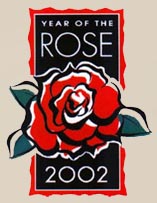 |
|
Albas |
How
Do We Measure? I once had customers, a husband and a wife, who were very avid rosarians. But strangely, the husband chose varieties with soft colors and a more dainty character. His wife, on the other hand, told me she liked her roses big and bold, even gaudy in color. Thus, each rose garden is a reflection of one's own taste and likes and is often a window into ones personality. I read an account some years ago about two men in England whose hobby was to breed daffodils. Both were businessmen and getting along in years. It so happened that both men died about the same time and a bulb merchant acquired their stocks of daffodil bulbs. But, even though the bulbs became mixed together it was said that each breeder was so different that one could tell by the bulbs and the flowers they bore which came from each man. Unwittingly, each breeder had stamped something of himself in the bulbs he developed. As for myself, I like roses in a wide range of colors, growth and blooming habit. I like them small and dainty such as the miniatures, but on the other hand I also like many of the big roses, all shapes, shapes and colors. While many of the hybrid teas are attractive, even beautiful in their own way, they are not my favorites. There are so many other beautiful roses that are of more interest to me than most hybrid teas. I sometimes refer to the hybrid tea (especially some I see at rose shows) as "a cabbage on a stick".
In my rose breeding, over a span of some sixty plus years, I have worked to develop the miniature rose as we know it today, as well as working with numerous other varieties and species. Of special interest to me have been some of the old tea rose varieties, hybrid perpetuals, hybrid multifloras and wichuraianas. At Left: One of the new Bracteata Hybrids In more recent years I have been working with stripes, moss and rugosa hybrids. And to make things even more interesting, I am working with crested moss rose hybrids, R. bracteata and even the most difficult of species, Hulthemia persica. I have now flowered a few third generation hybrids (and looking to the fourth generation). My goal is roses with red (or dark) centers, similar to my Halo™ varieties, but of even more intense or vivid centers and in larger sizes. To do this we have been crossing some of the Halo™ varieties with a Hulthemia hybrid. But
Hulthemia , like many species and other rose varieties, especially some
climbers, are once (spring) flowering. I now have one Hulthemia hybrid
that repeats all the way to fall. The tendency to mildew seems to be
inherited in most Hulthemia hybrids but in time I am sure this can be
overcome. So how do you measure a rose? Not with a tape measure or a ruler, not by size or color, it comes down to the simple thought, "Do I like it?" At Right: Another of the brand new Miniflora roses bred from R. Bracteata that will be released next spring. NOTE:
For 2002 Season. It is a difficult species to breed with so we are justly proud of these three new roses. One is a very double white miniature, and the other two might be classed as miniflora. They are very profuse bloomers, and fragrant. These are a FIRST, so we invite you to be among the first to try them in your garden as soon as they are released (spring 2002). They will be available in very limited quantity. And there are other unique and different kinds coming up soon - all the result of over 20-30 years of original and innovative breeding. Yesterday's Rose Yesterday,
God gave me So
today I look for roses, Ralph Moore 7/1/01 These
articles reprinted from Minirama magazine with the kind permission of
Mr. Moore and staff.
Original photographs and site content © Paul Barden 1996-2003 |
|

 Welcome
to the October 2001 edition of my web site! The roses I write about
are the Old Garden Roses and select shrub and miniature roses of the
20th century.
Welcome
to the October 2001 edition of my web site! The roses I write about
are the Old Garden Roses and select shrub and miniature roses of the
20th century.  We
talk of roses, rose gardens and rose shows but how do you measure a
rose garden or a rose? It is not the size or the number of bushes, or
the varieties that you have that really makes a rose garden. A rose
garden is more that all of these things. In most cases, a real rose
garden, whether it is one bush, a hundred, or a thousand, really should
be a part of you.
We
talk of roses, rose gardens and rose shows but how do you measure a
rose garden or a rose? It is not the size or the number of bushes, or
the varieties that you have that really makes a rose garden. A rose
garden is more that all of these things. In most cases, a real rose
garden, whether it is one bush, a hundred, or a thousand, really should
be a part of you.  Because
I like roses that are different from the "run of the mill" is possibly
the reason that my rose breeding is so diverse. So, how do we measure
a rose?
Because
I like roses that are different from the "run of the mill" is possibly
the reason that my rose breeding is so diverse. So, how do we measure
a rose? 
 At
Left: A Miniature with quilled petals, also bred from R. bracteata.
At
Left: A Miniature with quilled petals, also bred from R. bracteata.